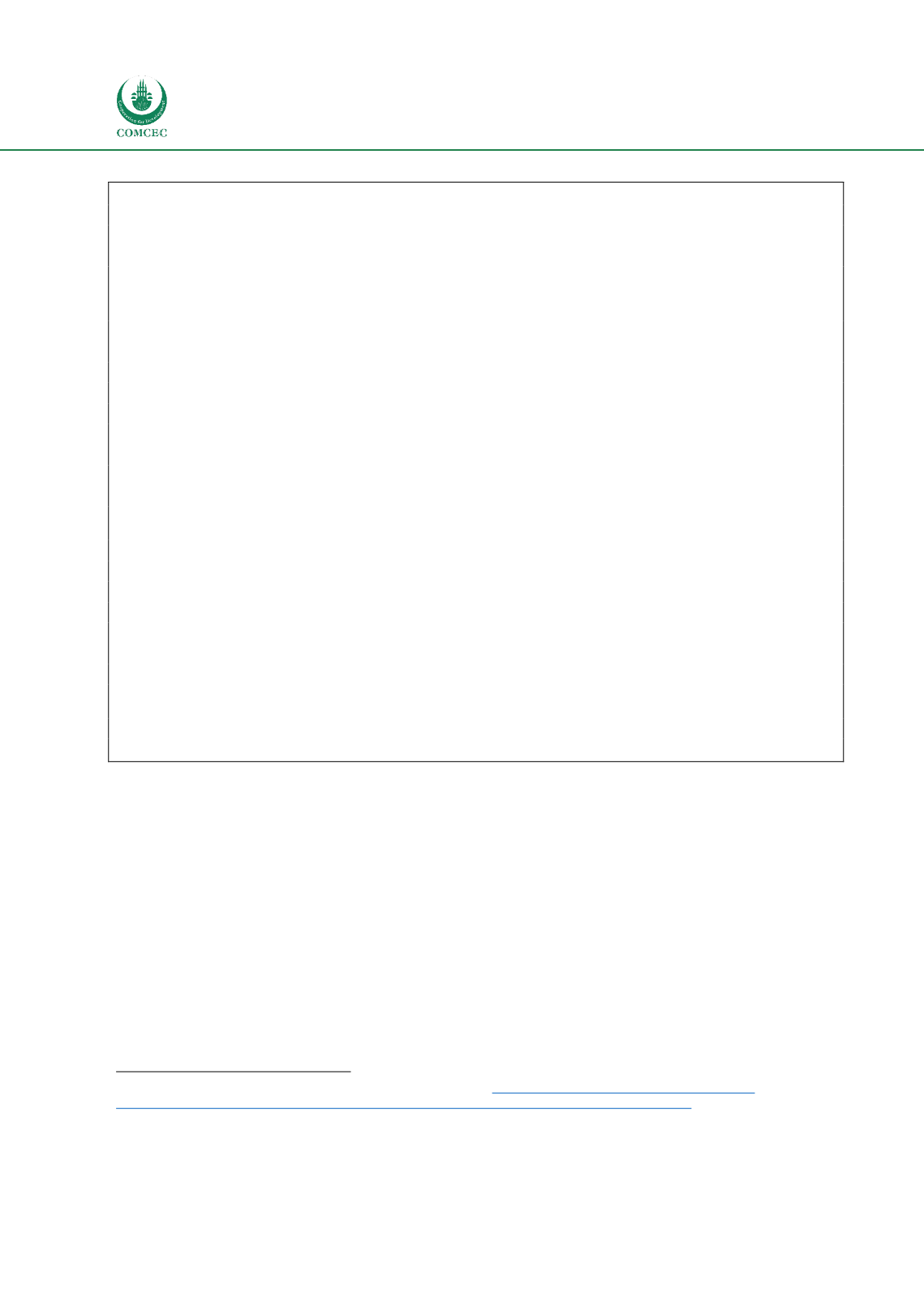

Improving Agricultural Market Performance
:
Creation and Development of Market Institutions
84
Box 2 - Impact of U.S. Cotton Subsidies on African Cotton Producers
Burkina Faso and Mali are among the world’s leading producers and exporters of cotton. In
2016/17 Burkina Faso was the ninth-largest and Mali the 11
th
-largest producer, and the two
countries ranked sixth and seventh among world cotton exporters, and other countries in the
region, including Benin, Chad, and Senegal, are also important producers and exporters. The US,
however, is the world’s third-largest producer of cotton and its largest exporter, with 2016/17
production and export volumes 13 times those of Burkina Faso.
133
The US has subsidized cotton production since the 1930s, with a wide range of price supports, loan
subsidies, export credit guarantees, and a program to encourage buyers (like yarn and textile
manufacturers and cotton exporters) to purchase U.S. cotton by providing a subsidy to do so when
the lowest price for the cotton exceeds a benchmark price. Between 1998 and 2002, the US spent
US$14.8 billion to subsidize cotton valued at US$21.6 billion, and according to the US Department of
Agriculture, without subsidies, the average U.S. cotton farmer would have lost US$871 for each acre
of cotton planted (about US$2,090 per hectare) from 1998 to 2004. The 2002 Farm Bill guaranteed
a minimum price of US$0.71 per pound, at a time when the world market price was about US$0.40.
This encouraged producers to dump cotton on international markets, driving down the world
market price.
In the crop year 2002, the US Government cotton subsidies totaled US$3.4 billion, nearly the twice
total U.S. foreign aid given to Sub-Saharan Africa, and more than the combined GDP at the time of
Benin, Burkina Faso, and Chad [Mali only later emerged as the second-largest producer in the
region]. These countries’ losses from US cotton subsidies negated the aid that they received: in 2002
Burkina Faso received US$10 million in US aid and Chad received US$5.7 million, but each country
lost nearly US$13.7 million in export earnings. These losses affected the countries’ ability to service
their debts. 2002 export revenue losses for Benin, Burkina Faso, Chad, and Mali amounted to
between 21 and 33 percent of their total debt service payments.
134
The US modified, though it did not eliminate, its cotton subsidy program following a WTO ruling in
favor of Brazil, which brought a case against the US in 2004.
As noted in Chapter 1, the purpose of market institutions is often, though not always, to
improve the performance of agro-food markets. Market institutions, especially government
institutions, often pursue social goals that do not necessarily entail improving market
performance. Indeed, many government interventions in agro-food markets, rather than
seeking to harness and increase the efficiency of markets, may instead bypass markets entirely
or distort market operations to achieve social or political goals. This is understandable, given
the often competing among different interest groups in society.
Examples of this kind of intervention include policies that cap producer prices for commodities
to ensure affordable food supplies to urban populations and policies that provide price
supports or restrict imports to support farmers’ incomes. It is important to note, however,
that even the most studiously neutral policies – that is, policies that do not seek to privilege
one social group over another – usually involve tradeoffs that will distribute benefits and costs
unequally, or unintended negative consequences. This is not to suggest that these sorts of
133
Cotton, Inc. (2017), Monthly Economic Letter – July, available at
http://www.cottoninc.com/corporate/Market- Data/MonthlyEconomicLetter/pdfs/English-pdf-charts-and-tables/World-Cotton-Production-Bales.pdf [Accessed August
2017].
134
Woodward, A. (2007), “The Impact of U.S. Subsidies on West African Cotton Production,” in Per Pinstrup-Andersen &
Fuzhi Cheng (eds.),
Food Policy for Developing Countries: Case Studies
, pp. 1-12, Ithaca, New York: Cornell University.


















